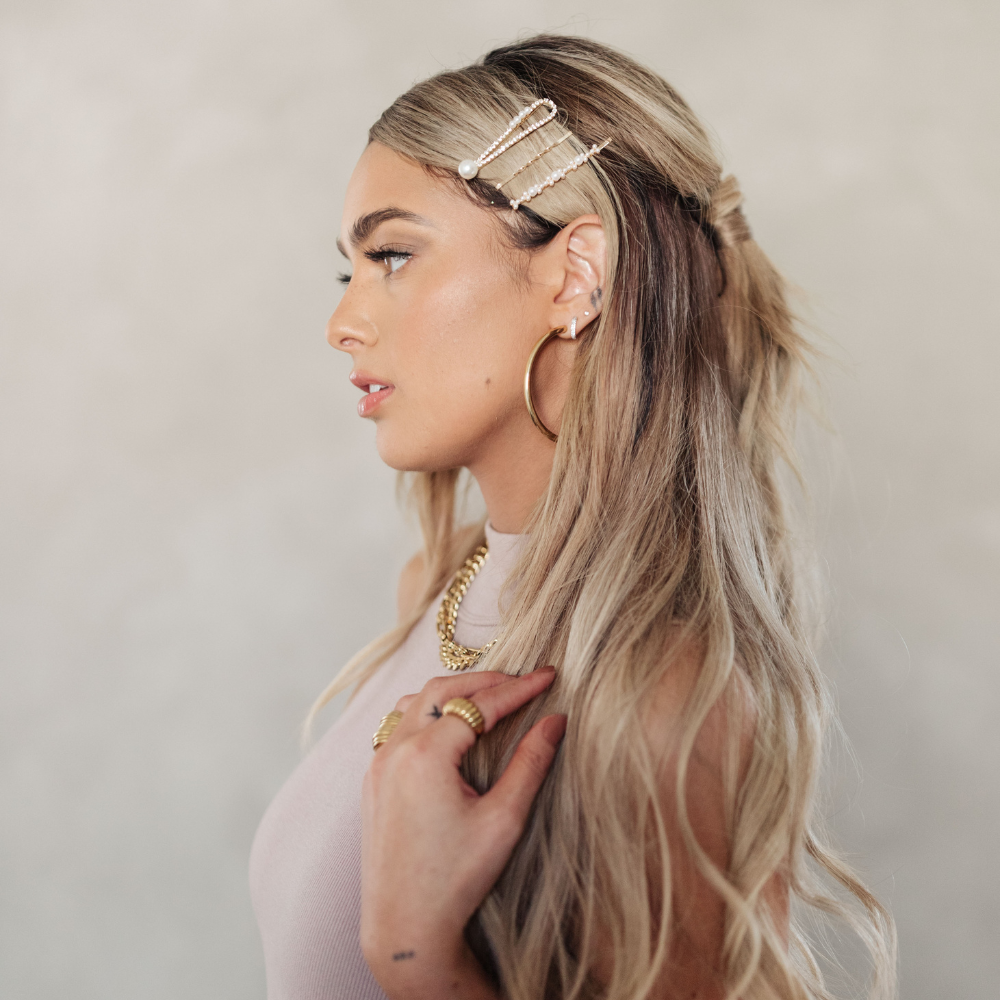We’ve all seen them… The horror stories online of improperly applied hair extensions - the thinning, the matting, the bald spots.
While it is October, we’re not here to scare you. When applied and maintained properly, hair extensions may actually improve your hair health, but it’s vital to take the proper approach for your head of hair.
If you’ve been nervous about taking the hair extension plunge, this guide is for you.
Before we dive into the breakdown, it’s important to us to let you know that this topic deeply resonates with us. Laced Hair Founder and CEO Lacy Gadegaard-West has struggled with hair loss of her own following her brain tumor and Multiple Sclerosis diagnosis, and hair extensions have provided her with the length and volume she loves throughout years of treatment, while actually allowing her natural hair to healthily regrow.
Without further ado, let’s talk extensions for thin hair.

The methods we’d typically recommend for those with thin hair include hand tied wefts, keratin bond extensions, and tape-ins. Each has its own benefits, but we’ll start with hand tied as they’re currently the most popular option on the market.
As always, we’re reminding you to seek out certified hair extension specialists, as thin hair is more fragile, and the expertise of your stylist will make or break your experience.
Hand tied extensions are applied weft by weft, allowing stylists to customize the amount of hair extensions (and the weight) applied to your natural hair. This allows stylists to precisely match and lightly increase the volume of your natural hair without the bulky look everyone dreads, or causing damage with a heavier weft meant for thicker hair, like our machine sewn options.
One drawback of hand tied extensions is that they must be placed a safe distance away from the hairline to maintain hair health, but the good news is that these spots can easily be filled by adding interLaced tape-in extensions, or a few keratin bonds.
If you’d like to take the hand tied extension route as someone with thin hair, installing multiple methods of extensions may get you the best results.
Speaking of tape-in and keratin bond extensions, both are great options for those with thinner hair, as they allow you to completely customize the placement and amount of hair applied, enabling your stylist to match your volume and protect your scalp health!
Tape-ins feature individual strands of hair attached to an adhesive tab a little over an inch wide, while keratin extensions’ strands are attached to a bond that is gently melted around a strand of individual hair. Keratin extensions offer an even more impressive blend than tape-in extensions, as the tip of the extension is nearly imperceptible, and also last 5-6 months after application without maintenance appointments, but due to these perks and the fact that keratin extensions can’t be re-used, they’re typically a more expensive route to take.
Both tape-in extensions and hand-tied extensions must be removed and re-applied every 6-8 weeks.

Once your extensions are applied, it’s vital that you take good care of them to preserve your hair health.
It’s always important to listen to your stylist, but especially when scheduling your hair extension maintenance appointments. The further your extensions get from your scalp, the more tension they’ll create and the more prone they’ll be to snagging or tangling, so those with thin hair may need shorter periods of time between maintenance appointments.
Tight hairstyles and rough treatment apply unnecessary tension to the scalp, and an excess of this may cause damage to your natural hair. Hair extensions last longest when gently brushed at least twice daily and worn down or loosely tied back when necessary.
Washing your hair properly with professional paraben and sulfate free products and following with a lightweight hair oil is also vital to the longevity of your extensions. Please ensure to wash between the rows of your extensions if you’ve opted for hand tied wefts, and be extra careful while detangling and drying, as hair is much more fragile while wet. Due to this, it’s vital that you never sleep on wet extensions.
Speaking of sleep, we recommend loosely braiding hair and resting with a silk bonnet or on a silk pillowcase for the lowest friction possible sleeping experience.

Due to the gentle treatment of their natural hair, and the ability to skip color treatments by adding dimension with extensions, many clients experience a surge of growth in their natural hair throughout their hair extension journey.
Again, we’d like to emphasize the importance of selecting a highly qualified stylist with your best interests in mind, listening to their advice, and taking the necessary steps to allow yourself a healthy hair extension experience.
To find a Laced Hair certified extension specialist near you, feel free to browse our stylist locator! We wish the best of luck on your hair extension journey, and endless good hair days.





